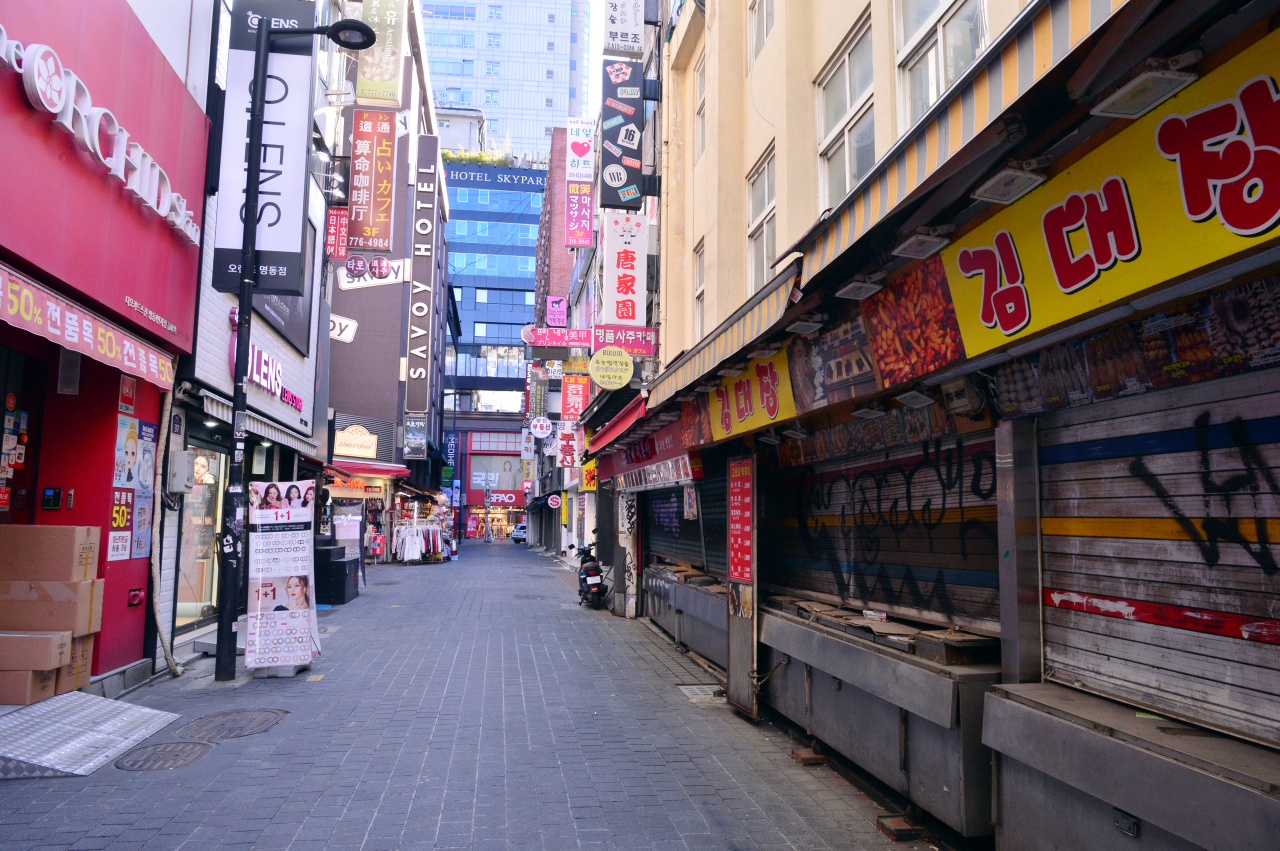 |
Many shops are closed with few shoppers walking around in Myeong-dong, in this photo taken Jan. 6, 2021. (Park Hyun-koo/The Korea Herald) |
Some 870,000 small business owners failed to see out the pandemic in 2020, while their companies’ operating profits nearly halved in the same period, government data showed Tuesday.
According to data from Statistics Korea and the Ministry of Small and Medium-sized Enterprises and Startups, the number of people working as small business owners fell 13.5 percent, or 871,000, on-year to 5.5 million as of end-2020.
The government throughout last year adopted strict quarantine and social distancing rules since the outbreak of the COVID-19 in mid-January. The rules that forced small businesses to cut back on operating hours and limit its customer pool have dealt a heavy blow to the industry.
Of the sectors, the wholesale and retail saw 313,000 people leaving, shedding 16.7 percent on-year as of end-December 2020. Some 252,000 business owners in accommodation and food services left in the same period, shedding 16.2 percent on-year in the cited period.
The total debt of the nation’s small business owners rose 19.3 percent on-year to 294.4 trillion won as of end-2020.
The average operating profit per business fell 43.1 percent on-year to 19 million won by end-2020, nearly halving from the previous year. Average sales per business dropped 4.5 percent to 224 million won in the same period.
The Ministry of SMEs and Startups cited the small businesses’ failure to adjust to digitalization of the industries as a key reason behind the lackluster profit.
In a survey tied to the data involving 40,000 small businesses across 11 industries, only 8.9 percent of small businesses had experience in making profit out of e-commerce. The survey was conducted from June to July this year.
But at the same time, the number of small companies here grew nearly 5 percent from the previous year in the same period. Retailers and wholesalers saw the largest number of gains with 915 and hotels and restaurants came next with 710. Manufacturers added 369 more businesses.
The number of hotels and restaurants gained 7.5 percent on-year and the number of manufacturers increased more than 3 percent in the same period.
In the government survey, 38.3 percent of small business owners picked toughening competition as a major hurdle in operating their businesses. Some 37.6 percent picked deteriorating commercial areas where their businesses are located and 28.7 percent chose rising raw material fees. Some 21 percent blamed the government’s strict quarantine measures.
By age, those in their 50s accounted for the largest and 32.2 percent of the total small business owners here. Those in their 40s accounted for 25.5 percent, while 60s and 30s came to 22.6 percent and 13.5 percent, respectively. Business owners in their 20s or below accounted for 6.3 percent of the pool.
“Through the latest research, we were able to confirm the struggles of small businesses amid the pandemic,” the Ministry of SMEs and Startups said.
“We plan to draw and carry out active measures to support such small businesses.”
(
mkjung@heraldcorp.com)








